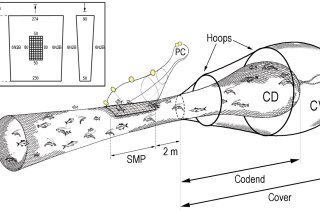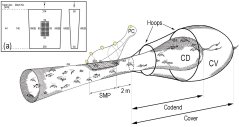
News
Can a square-mesh panel inserted in front of the codend reduce bycatch in Mediterranean bottom trawl fisheries?
The majority of the Mediterranean fish stocks are currently overfished (that is, beyond the Maximum Sustainable Yield). This is due to increased fishing intensity in the area and inadequate release efficiency of small fish. In BENTHIS, we try to find technical solutions to help solving this issue.
One of the problem of the fishing nets used in the Mediterranean bottom trawl fisheries is the small codend mesh size (40 mm square or 50 mm diamond) so that few juveniles can escape. In one of the experiment carried out in BENTHIS, we investigated whether a 50 mm square-mesh panel placed before the codend improves the exploitation pattern in the Mediterranean bottom trawl fisheries for Atlantic horse mackerel, European hake, Red mullet, Poor cod, Broadtail shortfin squid, and Deep-water rose shrimp.
The results clearly demonstrate that a 50 mm square-mesh panel, placed in the upper portion of the net before the codend, does not contribute much to the overall release efficiency.
For all the species analysed, the majority of escapement happened through the codend, whereas only a small proportion of fish escaped through the square-mesh panel. Various attempts to increase panel efficiency have been made in other studies by placing a hummer device, a black cylinder or a cone behind the panel, other methods have involved attaching the float-ing ropes beneath the panel, to guide the fish toward it. Future studies should focus on improving fish-panel contact probability either through use of stimulation devices or through a greater understanding of fish behaviour inside the trawl.
Read the original article:
Brčić, J., Herrmann, B., Sala, A., 2016. Can a square-mesh panel inserted in front of the codend improve the exploitation pattern in Mediterranean bottom trawl fisheries? Fisheries Research, 183: 13-18.

